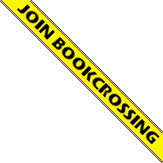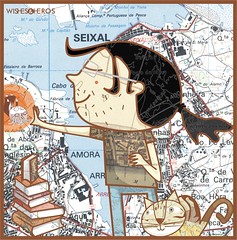Seixal Jazz 2005
O festival volta a realizar-se este ano no Seixal, entre 14 e 29 de Outubro. Tal como nas edições anteriores, esperam-se workshops e eventos paralelos. Aqui fica a programação, e mais informações podem ser obtidas aqui:
Auditório Municipal - Fórum Cultural do Seixal (de 20 a 29 de Outubro, às 21h30 e 23h30)
20 de Outubro (quinta-feira)
Wayne Escoffery Quintet
Wayne Escoffery (saxofones), Jeremy Pelt (trompete), Rick Germanson (piano), Hans Glawischnig (contrabaixo) e Jason Brown (bateria).
21 de Outubro (sexta-feira)
Quinteto de Laurent Filipe
Laurent Filipe (trompete, fliscorne), Mário Delgado (guitarras), Rodrigo Gonçalves (piano), Nelson Cascais (contrabaixo) e Alexandre Frazão (bateria).
22 de Outubro (sábado)
Kurt Rosenwinkle Quintet
Kurt Rosenwinkle (guitarras), Chris Cheek (saxofones), Aaron Goldberg (piano), Joe Martin (contrabaixo) e Ari Hoenig (bateria).
27 de Outubro (quinta-feira)
David Binney Sextet
David Binney (saxofone alto), Mark Turner (saxofones tenor e soprano), Adam Rogers (guitarras), Craig Taborn (piano), Scott Colley (contrabaixo) e Dan Weiss (bateria).
28 de Outubro (sexta-feira)
Miguel Zenón Quartet
Miguel Zenón (saxofones), Luis Perdomo (piano), Hans Glawischnig (contrabaixo) e Henry Cole (bateria).
29 de Outubro (sábado)
Mike Fahn & Mary Ann McSweeney Quintet
Mike Fahn (trombone), Rick Margitza (saxofones tenor e soprano), John Hart (guitarras), Mary Ann McSweeney (contrabaixo) e Tim Horner (bateria).
Seixaljazz Clube (de 14 a 29 de Outubro (excepto seg e dom), entre as 21h00 e as 02h00)
14 e 15 de Outubro (sexta-feira e sábado)
Filipe Melo Trio
Filipe Melo (piano), Bruno Santos (guitarra) e Bernardo Moreira (contrabaixo).
(apresentação do disco de estreia para a Clean Feed/Trem Azul)
18 de Outubro (terça-feira)
Escola Moderna de Jazz do Seixal
19 de Outubro (quarta-feira)
Rui Caetano Trio
Rui Caetano (piano), com João Custódio (contrabaixo) e Marco Franco (bateria)
20 de Outubro (quinta-feira)
Mário Franco Trio
Mário Franco (contrabaixo), Mário Delgado (guitarra) e Alexandre Frazão (bateria).
21 de Outubro (sexta-feira)
Quarteto Politonia
José Soares (guitarra), Guto Lucena (saxofones alto e tenor), Mário Franco (contrabaixo) e Carlos Miguel (bateria).
22 de Outubro (sábado)
SPILL
André Fernandes (guitarra), João Gomes (teclados), Marta Hugon (voz, guitarras e sampler), Miguel Amado (baixo eléctrico) e André Sousa Machado (bateria, bateria electrónica).
25 de Outubro (terça-feira)
Escola Moderna de Jazz do Seixal
26 de Outubro (quarta-feira)
Eurobots
Jessie Chandler (piano), André Fernandes (guitarra), Demian Cabaud (contrabaixo) e João Lencastre (bateria).
27 de Outubro (quarta-feira)
Quinteto de Maria Emauz
Maria Emauz (voz), Guto Lucena (saxofones alto e tenor), Rui Caetano (piano), Demian Cabaud (contrabaixo) e Bruno Pedroso (bateria).
28 e 29 de Outubro (sexta e sábado)
George Garzone (saxofones), Mário Delgado (guitarra), Carlos Barretto (contrabaixo) e Alexandre Frazão (bateria).
Auditório Municipal - Fórum Cultural do Seixal (de 20 a 29 de Outubro, às 21h30 e 23h30)
20 de Outubro (quinta-feira)
Wayne Escoffery Quintet
Wayne Escoffery (saxofones), Jeremy Pelt (trompete), Rick Germanson (piano), Hans Glawischnig (contrabaixo) e Jason Brown (bateria).
21 de Outubro (sexta-feira)
Quinteto de Laurent Filipe
Laurent Filipe (trompete, fliscorne), Mário Delgado (guitarras), Rodrigo Gonçalves (piano), Nelson Cascais (contrabaixo) e Alexandre Frazão (bateria).
22 de Outubro (sábado)
Kurt Rosenwinkle Quintet
Kurt Rosenwinkle (guitarras), Chris Cheek (saxofones), Aaron Goldberg (piano), Joe Martin (contrabaixo) e Ari Hoenig (bateria).
27 de Outubro (quinta-feira)
David Binney Sextet
David Binney (saxofone alto), Mark Turner (saxofones tenor e soprano), Adam Rogers (guitarras), Craig Taborn (piano), Scott Colley (contrabaixo) e Dan Weiss (bateria).
28 de Outubro (sexta-feira)
Miguel Zenón Quartet
Miguel Zenón (saxofones), Luis Perdomo (piano), Hans Glawischnig (contrabaixo) e Henry Cole (bateria).
29 de Outubro (sábado)
Mike Fahn & Mary Ann McSweeney Quintet
Mike Fahn (trombone), Rick Margitza (saxofones tenor e soprano), John Hart (guitarras), Mary Ann McSweeney (contrabaixo) e Tim Horner (bateria).
Seixaljazz Clube (de 14 a 29 de Outubro (excepto seg e dom), entre as 21h00 e as 02h00)
14 e 15 de Outubro (sexta-feira e sábado)
Filipe Melo Trio
Filipe Melo (piano), Bruno Santos (guitarra) e Bernardo Moreira (contrabaixo).
(apresentação do disco de estreia para a Clean Feed/Trem Azul)
18 de Outubro (terça-feira)
Escola Moderna de Jazz do Seixal
19 de Outubro (quarta-feira)
Rui Caetano Trio
Rui Caetano (piano), com João Custódio (contrabaixo) e Marco Franco (bateria)
20 de Outubro (quinta-feira)
Mário Franco Trio
Mário Franco (contrabaixo), Mário Delgado (guitarra) e Alexandre Frazão (bateria).
21 de Outubro (sexta-feira)
Quarteto Politonia
José Soares (guitarra), Guto Lucena (saxofones alto e tenor), Mário Franco (contrabaixo) e Carlos Miguel (bateria).
22 de Outubro (sábado)
SPILL
André Fernandes (guitarra), João Gomes (teclados), Marta Hugon (voz, guitarras e sampler), Miguel Amado (baixo eléctrico) e André Sousa Machado (bateria, bateria electrónica).
25 de Outubro (terça-feira)
Escola Moderna de Jazz do Seixal
26 de Outubro (quarta-feira)
Eurobots
Jessie Chandler (piano), André Fernandes (guitarra), Demian Cabaud (contrabaixo) e João Lencastre (bateria).
27 de Outubro (quarta-feira)
Quinteto de Maria Emauz
Maria Emauz (voz), Guto Lucena (saxofones alto e tenor), Rui Caetano (piano), Demian Cabaud (contrabaixo) e Bruno Pedroso (bateria).
28 e 29 de Outubro (sexta e sábado)
George Garzone (saxofones), Mário Delgado (guitarra), Carlos Barretto (contrabaixo) e Alexandre Frazão (bateria).




